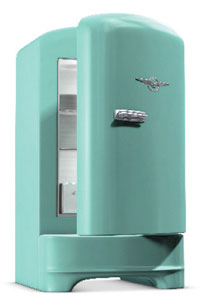
Geothermal heat pumps are used to heat and cool buildings by way of a heat exchanger that pulls heat or sinks heat from the relatively constant ambient temperature of the ground. The easiest way to imagine how this might occur is by thinking about a refrigerator. In a refrigerator, a heat pump is used to remove heat from the interior air of the refrigerator (heat source) into the air of the room in which the refrigerator is located (the heat sink).
Geothermal heat pumps take advantage of the immense thermal mass of the Earth. In regions where summer cooling is required, exterior daytime temperatures generally are above 26 degrees Celsius (80 degrees Fahrenheit). Where winter heating is required, exterior temperatures generally are below 10 degrees Celsius (50 degrees Fahrenheit).
At shallow depths in the Earth, a consistent temperature of about 10 degrees Celsius to 13 degrees Celsius is maintained. This intermediate temperature between the summer highs and winter lows, makes the Earth an excellent potential heat sink in the summer and a heat source in the winter.
The basic configuration of these systems is generally a vertical loop or horizontal loop system. The vertical features boreholes that are a few hundred feet deep, while the horizontal loop system is generally 10 feet deep or less but has a larger footprint to achieve a comparable loop area as that of the vertical system. These loops continuously circulate a working fluid between a heat pump inside the building and the Earth.
The CGEC is currently working on a return on investment study for these systems for all of California as well as the 30 most populous metropolitan areas in the United States. To see the progress on this study, click here.
